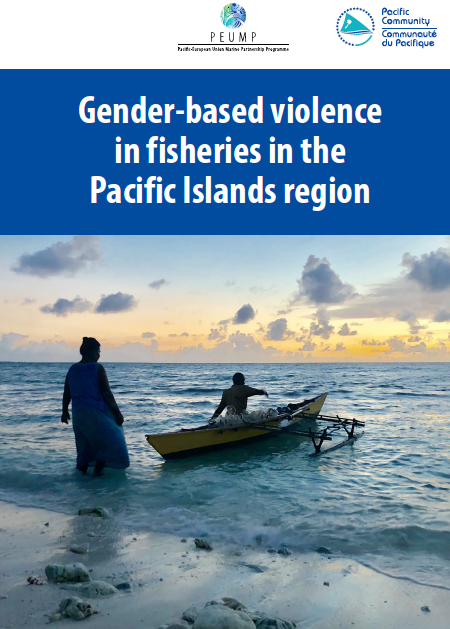I’m always stoked to see one of my pictures on the cover of a SPC publication, yet this one confronts a poignant reality in our industry and region. This comes on the heels of another major project I was also involved with, "Pictures and Words," a couple of years ago, the Pacific Handbook for human rights, gender equity, and social inclusion in tuna industries.
As usual, I'm very thankful to SPC not only for portraying one of my favourite pictures, but also for interviewing me for this research.
While capacity difficulties and constraints exist, the human impacts of fishing need to be confronted; long gone are the days when we could argue the legitimacy of our advances in the sustainability aspect of the Pacific tuna fishery while neglecting the human side. As James Baldwin once said: "Not everything that is faced can be changed, but nothing can be changed until it is faced”.
As always, I recommend you read the original, and for the lazy among you, below is an AI-generated summary that surely does not do justice to the whole paper.
Introduction
Gender-Based Violence (GBV) is increasingly recognised as a serious human rights issue in the fisheries sector. While gender inequity in fisheries has long been documented, GBV remains underreported and poorly addressed in policy and practice. This paper provides a comprehensive analysis of GBV risks, drivers, and responses in Pacific fisheries, aiming to inform policy frameworks, capacity-building, and integrated strategies.
Understanding GBV in Fisheries
What is GBV?
Definition: GBV refers to harmful acts directed at an individual based on their gender. It includes physical, sexual, psychological, and economic abuse.
Key forms in fisheries:
Sexual harassment and exploitation in workplaces (e.g., processing plants, vessels).
Intimate partner violence linked to economic stress or job insecurity.
Trafficking and forced labour in distant-water and industrial fleets.
Economic violence—withholding earnings or controlling access to income.
Why Fisheries Are High-Risk Environments
Isolation and mobility: Long fishing trips and remote work sites create environments with limited oversight.
Male-dominated workforce: Power imbalances and cultural norms perpetuate gender hierarchies.
Informal and precarious employment: Limited labour protections for women, migrant workers, and crew on foreign-flagged vessels.
Dependency relationships: For example, women fish vendors depending on male fishers for supply—creating vulnerabilities to coercion or exploitation.
Evidence from the Pacific
Data on GBV in fisheries is scarce, largely due to stigma, underreporting, and lack of sector-specific surveys.
National prevalence: GBV rates among women in Pacific Island Countries range from 37% to 68% (intimate partner violence), with indications that fisheries-related communities experience even higher risks.
Case reports highlight:
Sexual harassment of women in processing plants.
Exploitation of female traders during fish transactions.
Reports of forced labour and sexual abuse on some industrial vessels.
Drivers and Contributing Factors
Cultural and Social Norms
Gender stereotypes position women in low-status roles.
Patriarchal norms discourage reporting and prioritize male economic roles.
Economic Pressures
Income volatility in fisheries exacerbates domestic stress and violence.
Women’s economic dependency heightens vulnerability to abuse.
Regulatory Gaps
Labour standards in fisheries often exclude gender-specific protections.
Weak enforcement of ILO Work in Fishing Convention (C188) and lack of national GBV policies for fisheries.
GBV in Fisheries Supply Chains
Small-scale fisheries: Women dominate post-harvest processing and marketing, facing harassment and coercion during transactions.
Industrial fleets:
Crew (including migrants) often lack grievance mechanisms.
Risk of trafficking, especially in distant-water fishing.
Processing sector: Reports of sexual exploitation tied to supervisory roles.
Intersection with Labour and Human Rights Frameworks
GBV is linked to labour rights, occupational safety, and human rights obligations.
International frameworks:
ILO C188: Work in Fishing Convention—sets minimum labour standards but limited adoption in the Pacific.
FAO Code of Conduct for Responsible Fisheries: Calls for gender equity but lacks enforcement mechanisms.
CEDAW & SDG 5: Commit to eliminating violence against women, yet sector-specific strategies remain weak.
Current Responses and Gaps
Responses in the Region
Some Pacific Island countries have national GBV strategies, but fisheries ministries are rarely integrated into these plans.
NGO-led initiatives provide community awareness and support services, but coverage is limited and not fisheries-specific.
Industry measures (e.g., codes of conduct) remain voluntary and lack robust monitoring.
Major Gaps
Policy integration: Fisheries management plans rarely reference GBV.
Capacity building: Fisheries officers lack training on GBV identification and referral.
Data systems: No systematic collection of GBV data in fisheries sectors.
Recommendations
The paper proposes multi-level interventions to address GBV risks in fisheries:
Policy and Governance
Integrate GBV prevention into fisheries policies, MCS frameworks, and licensing conditions.
Require codes of conduct for operators, covering sexual harassment and exploitation.
Include labour standards and GBV provisions in bilateral fishing agreements.
Industry Measures
Adopt zero-tolerance policies on GBV.
Establish onboard grievance mechanisms and hotlines for reporting.
Provide gender-sensitive training for vessel crews and supervisors.
Community and Social Interventions
Support community education campaigns targeting harmful gender norms.
Strengthen women’s economic empowerment through access to finance and value-chain participation.
Data and Research
Conduct sector-specific GBV prevalence studies.
Incorporate GBV indicators in fisheries monitoring and compliance tools.
Regional and International Action
Promote ratification and implementation of ILO C188.
Align GBV strategies with FFA, SPC, and regional MCS plans.
Collaborate with UN agencies and NGOs for technical and financial support.
Key Takeaways
GBV in fisheries is a hidden but critical issue that undermines human rights, social equity, and sector sustainability.
Addressing GBV requires a multi-stakeholder approach, integrating gender, labour, and human rights considerations into fisheries governance.
Enforcement and monitoring systems (e.g., Port State Measures, licensing) can play a role in identifying and addressing GBV cases.
Achieving SDG 5 (gender equality) and SDG 14 (life below water) requires urgent, coordinated action to eliminate GBV risks across fisheries supply chains.
Conclusion
Structural inequalities, economic dependency, and regulatory gaps drive the fisheries sector’s vulnerability to GBV. While awareness is growing, policy responses remain fragmented and under-resourced. A proactive strategy—anchored in governance reforms, industry accountability, and community empowerment—is essential to protect vulnerable groups and uphold human rights within fisheries.
